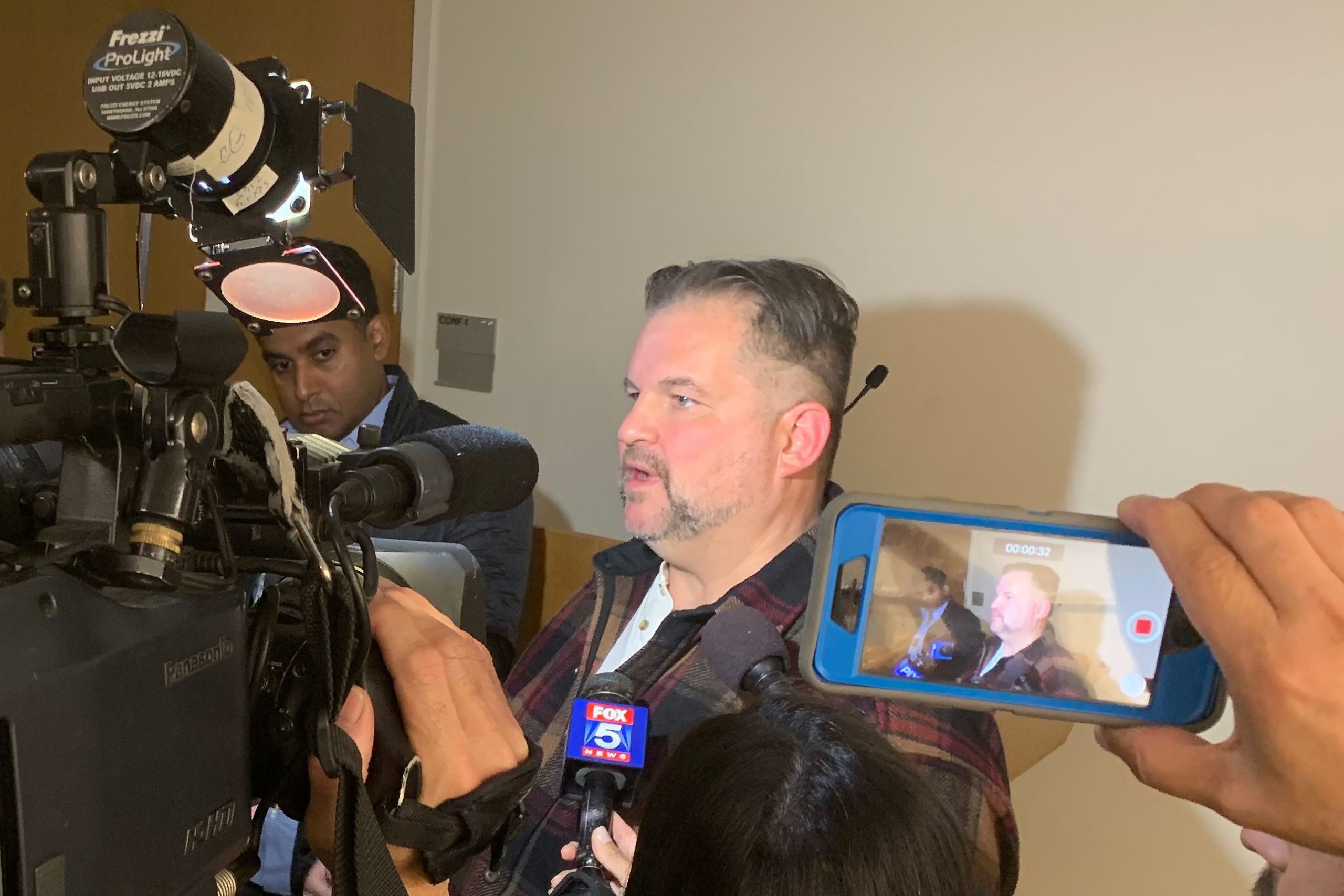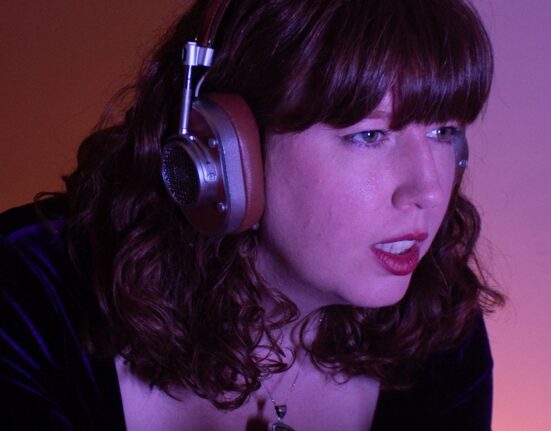As the MTA filled in key details Thursday on a plan to toll motorists driving into the core of Manhattan as a way to fund mass transit improvements, a member of the panel that shaped the congestion pricing proposal resigned in protest.
Labor leader John Samuelsen yanked his name off the congestion pricing recommendations issued by the Traffic Mobility Review Board, charging in a two-page resignation letter that the MTA “has failed to meet the moment” by not expanding express bus service prior to launching the vehicle-tolling program.
“I don’t want to have my name on the report because I am concerned it will become a rubber stamp of the overall congestion pricing ethic,” Samuelsen, international president of the Transport Workers Union, told THE CITY by phone from Florida. “And the overall congestion pricing ethic is flawed because they have refused to put new service out.”
The TMRB recommendations say passenger vehicles going south of 60th Street in Manhattan should be tolled $15 once daily — with tolls for trucks at $24 or $36, depending on size — from 5 a.m. to 9 p.m. on weekdays and 9 a.m. to 9 p.m. on weekends. After 9 p.m., tolls would be lowered 75%.
An August 2022 environmental assessment of the Central Business District Tolling Program, also known as congestion pricing, floated the possibility of drivers going south of 60th Street being tolled between $5 and $23 per trip, depending on the time of day and type of vehicle.
The plans were designed to provide a $15 billion boost to the MTA’s more than $50 billion capital program for transit upgrades that include modern subway signals, new trains and buses, station accessibility work and system expansion.
MTA chairperson and CEO Janno Lieber on Thursday praised the review board for producing “an incredibly thoughtful, detailed and balanced report that points the way forward for effective implementation of congestion pricing.”
“Congestion pricing will mean less traffic, cleaner air, safer streets and better transit.”
But Samuelsen argues congestion pricing will not do enough to cut into vehicle use in Manhattan by New Yorkers in “outerborough neighborhoods where there is a car culture” because of a lack of positive incentives and additional service.
“There is a whole demographic of blue-collar, outerborough New York City that does not view public transit as an option,” he said.
Mayor Eric Adams chimed in with criticism, too, calling the TMRB recommendations “the beginning of the conversation” and adding, “We don’t want to overburden working-class New Yorkers.”
The mayor’s remarks were quickly batted back by supporters of congestion pricing.
“He’s just an empty suit on this issue,” said Jon Orcutt, a former director for the city Department of Transportation who helped develop Bloomberg’s congestion pricing plan. “He’s like Lucy trying to pull the football out from Charlie Brown, but fortunately, [congestion pricing] is legislated and the mayor doesn’t have any authority to change that.”
‘All Stick and No Carrot’
In the leadup to the recommendations from the review board, various transit experts raised concerns about whether New York will be ready to be the first U.S. city to try congestion pricing.
Samuelsen and Janette Sadik-Khan, who served as city transportation commission under Mayor Michael Bloomberg when a previous push to implement congestion pricing failed in 2008, had warned in recent months that New York needed to follow the lead of London and Stockholm by boosting transit service before the start of the tolling plan.
In the period leading up to their placing congestion-related tolls on motorists, both European cities took measures to discourage driving and encourage mass transit. London increased bus frequency, added 300 new buses, along with 8,500 park-and-ride spaces. Stockholm put nearly 200 new buses into service while adding bike and pedestrian infrastructure.
“We’ve traveled different roads to congestion pricing — London and Stockholm did it to reduce car traffic in the central city,” Orcutt said. “We came to it because the previous governor screwed up transit to such a degree that we needed a giant new infusion of money.”
Samuelsen told THE CITY in September that “this could be an incredible moment where we create a new New York” by expanding the frequency of bus service in city neighborhoods not easily accessible by subway.

In his resignation letter on Thursday, he blasted the MTA for “stubbornly and moronically” sticking to what he called “the status quo” by pushing an “all stick and no carrot” plan that “will definitely raise revenue” — but not convince enough New Yorkers to ditch their vehicles in favor of mass transit.
“There is nothing encouraging people to use public transit,” Samuelsen told THE CITY. “There is no carrot, there is no enticement — they just epically failed.”
MTA officials have previously said that the transit system can “easily handle 10 times more riders then the 72,300 to 110,000 people who are projected to switch to transit after congestion pricing takes effect,” citing how post-pandemic ridership is still far off early 2020 levels.
The MTA is also set to increase evening service on the C, N and R lines and midday service on the G in December. That’s on the heels of service increases over the summer on several other subway lines and redesigns to Staten Island express bus routes and Bronx bus routes, with others planned for Brooklyn, Queens and Manhattan bus networks.
“From a service perspective, a lot of riders will benefit from the revenue generated [by congestion pricing],” said Renae Reynolds, executive director of Tri-State Transportation Campaign. “The capital plan is dependent on that revenue, so a lot of that is going to bear out in the future.”
The tolling setup recommended by the Traffic Mobility Review Board calls for minimal exemptions from the fees — after more than 120 requests to opt out were sought by the likes of artists, musicians, veterans, doctors, nurses, CUNY students and more.
Review board chair Carl Weisbrod said the now five-person panel “thought in terms of the many, not the few” when making recommendations that would meet the congestion pricing’s legal mandate of reducing congestion and raising money for capital improvements.
“The more exemptions that are granted, the more other people will say, ‘You granted an exemption to them, you didn’t grant an exemption to me,” Weisbrod told reporters Thursday. “It does create a sense of unfairness as to why certain categories should be exempt and others wouldn’t be. So we were indeed very parsimonious about exemptions.”
Among those that will be exempt from the tolls are specialized government vehicles, emergency vehicles and those transporting people with disabilities.
The recommendations in the report will be considered at next week’s meeting of the MTA board — and they also face a months-long public review process before being implemented.
Congestion pricing also faces opposition in federal court from New Jersey officials challenging what they contend is a “rubber stamp” approval of the tolling plan.







